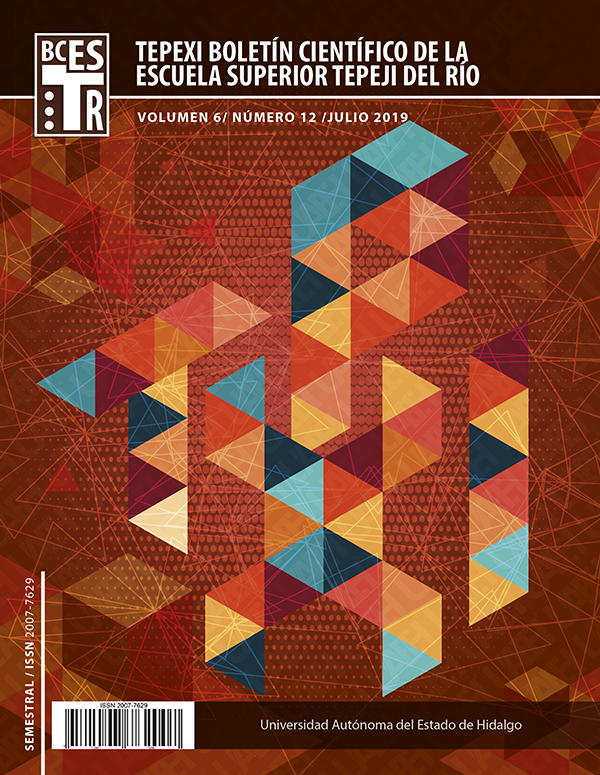Microsoft® corporation Balanced Score Card and its importance
Abstract
The organizational environment requires useful tools that allow the management of organizations, due to the chaotic and demanding business environment that companies face. On the one hand, the new methods of production, client’s needs and market selectivity, have made business competition increasingly difficult and rigorous. In this document, the tool of the balanced scorecard used by Microsoft® is used as a tool for decision making, through its four perspectives: financial, customer, internal process and innovation.
Downloads
References
Bhatt, P., Ahmad, A. J. & Roomi, M. A. (2016). Social innovation with open source software: User engagement and development challenges in India. Technovation, 52, 28-39, consultado de: [https://reader.elsevier.com/reader/sd/pii/S0166497216000055?token=7EBBA9E0B39E5603B3B606998E0DFE2467D9B516D9BD5D3E852A868DEB79CF47D5A02DBF2DFA3A102F55D56A0975B309] & https://www.sciencedirect.com/science/article/pii/S0166497216000055].
Dincer, H., Yüksel, S. & Martinez, L. (2019). Balanced scorecard-based Analysis about European Energy Investment Policies: A hybrid hesitant fuzzy decision-making approach with Quality Function Deployment. Expert Systems with Applications, 115, 152-171, consultado de: [https://www.sciencedirect.com/science/article/pii/S0957417418305001] & [https://reader.elsevier.com/reader/sd/pii/S0957417418305001?token=892AE574E2567613A995671F128A9C0EC1D0EEFC48A46307D262BCB2882F0F2360EA1ED5A537B36D99D318969940CB30].
Johnson, P., Cassell, C., Close, P. & Duberley, J. (2001). Performance evaluation and control: supporting organizational change. Management Decision, 39(10), 841–851. DOI: [10.1108/00251740110402337], consultado de: [https://www.emeraldinsight.com/doi/full/10.1108/00251740110402337].
Kangis, P. & Williams S., D.G. (2000). Organisational climate and corporate performance: an empirical investigation. Management Decision, 38(8), 531–540, DOI: [10.1108/eum0000000005371], consultado de: [https://www.emeraldinsight.com/doi/full/10.1108/EUM0000000005371].
Kaplan, R.S., Ballve, A. & Davila, A. (2000). Microsoft Latin America, Harvard Business School, 9-100-140, consultado de: [https://www.hbs.edu/faculty/Pages/item.aspx?num=26988].
Kaplan, R. S. & Norton, D. P. (1992). The balanced scorecard: measures that drive performance, consultado de: [http://home.bi.no/fgl99011/bok2302/MB92.pdf].
Kirschner, B. (2008). Building a balanced scorecard for open source policy and strategy. Proceedings of the 2nd International Conference on Theory and Practice of Electronic Governance - ICEGOV’08, DOI: [10.1145/1509096.1509142], consultado de: [https://dl.acm.org/citation.cfm?id=1509142].
Lang, S., Kota, M. S. S. D., Weigert, D., & Behrendt, F. (2019). Mixed reality in production and logistics: Discussing the application potentials of Microsoft HoloLensTM. Procedia Computer Science, 149, 118-129, consultado de: [https://www.sciencedirect.com/science/article/pii/S187705091930122X].
Massingham, R., Massingham, P. R. & Dumay, J. (2019). Improving integrated reporting: a new learning and growth perspective for the balanced scorecard. Journal of Intellectual Capital, 20(1), 60-82, consultado de: [https://www.researchgate.net/profile/John_Dumay/publication/330025192_Improving_integrated_reporting_A_new_learning_and_growth_perspective_for_the_balanced_scorecard/links/5c3c2e1e458515a4c7248451/Improving-integrated-reporting-A-new-learning-and-growth-perspective-for-the-balanced-scorecard.pdf].
Neely, A., Adams, C. & Crowe, P. (2001). The performance prism in practice. Measuring Business Excellence, 5(2), 6–13. DOI: [10.1108/13683040110385142], consultado de: [https://www.emeraldinsight.com/doi/full/10.1108/13683040110385142].
O'Reilly III, C. A., Chatman, J. & Caldwell, D. F. (1991). People and organizational culture: A profile comparison approach to assessing person-organization fit. Academy of management journal, 34(3), 487-516, consultado de: [https://faculty.haas.berkeley.edu/chatman/papers/36_peopleorgculture.pdf].
Sainaghi, R., Phillips, P. & d’Angella, F. (2019). The balanced scorecard of a new destination product: Implications for lodging and skiing firms. International Journal of Hospitality Management, 76, 216-230, consultado de: [https://www.sciencedirect.com/science/article/pii/S0278431917308174] & [https://reader.elsevier.com/reader/sd/pii/S0278431917308174?token=ADEF12FA4AFB3955CD7DF4258FB051EE150E357EE3E248E7876829A977D24FC1E6B203FBE8B7770EC59235B48006D2EC].
Trus, M., Galdikiene, N., Balciunas, S., Green, P., Helminen, M. & Suominen, T. (2019). Connection between organizational culture and climate and empowerment: The perspective of nurse managers. Nursing & health sciences, 21(1), 54-62, consultado de: [https://onlinelibrary.wiley.com/doi/pdf/10.1111/nhs.12549].
Woznyj, H. M., Heggestad, E. D., Kennerly, S. & Yap, T. L. (2019). Climate and organizational performance in long‐term care facilities: The role of affective commitment. Journal of Occupational and Organizational Psychology, 92(1), 122-143, consultado de: [https://onlinelibrary.wiley.com/doi/pdf/10.1111/joop.12235].












